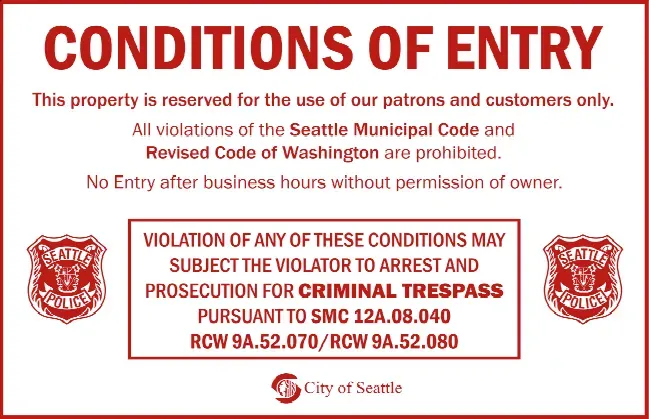Business Outreach & Crime Prevention Through Environmental Design
What Can I Do About Crime At My Business?
Practical Crime Prevention Tips for Your Small Business
What To Do If You're In Danger
During
Cooperate quickly.
People committing a crime (i.e., robbery) can be unpre- dictable, mentally ill, intoxicated, and nervous.
Don’t argue or resist.
It can make things worse and put your safety at risk.
Pay attention to the person’s physical appearance-
be sure to pay attention to physical details about the person committing the crime. Height, weight, eye color, clothes, shoes, any visible tattoos are all helpful details to report to authorities, making it easier for them to find and identify the person who committed the crime.
After
Call 9-1-1 immediately!
Alert your neighbors.
This way, they are also aware of the threat and can potentially report to authorities anything they noticed during the time the crime took place.
Don’t touch anything the robber has touched.
Leave things in place.
Write down anything you remember about the person and the incident –
these memories can fade quickly and putting them on paper can be helpful later.
Don't Be An Easy Target
✔ Do's
- Clean and clear windows
- Clean walls and sidewalks
- Short and trimmed plants or bushes
- Business signs that are clear and inviting
- Take ownership of the outside space around your business
- Join Conditions of Entry program to control who can be on your property.
✗ Don't
- Old, faded, torn posters on walls
- Posters covering windows
- Piles of leaves or other kinds of trash left in front of business
- Broken signs and lights, or damaged building parts
- Low hanging trees that can block your view and create shadows
Security Measures You Can Do
- Use good quality locks and 3-inch screws on all doors and windows to help avoid forced entry.
- Use security film on windows to reduce the potential for break-in yet maintain visibility.
- Use good lighting and quality security cameras that are vandal proof for surveillance. Also, ensure that video is backed up on an accessible tape or hard drive.
- Ensure that outdoor lighting is evenly distributed to avoid shadows or blind spots. Also, lighting should not be too bright, as it may inhibit your ability to see what is taking place.
- Ensure that your business name and address numbers are clearly visible from the street - day or night. Also, display emergency contact information on the front and back of your business.
- Control the use of your parking lot by using chains or gates to close and lock all entrances when your business is closed.
- To maintain visibility from the inside and outside of your business, ensure that no posters or advertisements are displayed in your windows or doors.
- Use alternative payment methods to reduce the amount of cash on site. Empty the register at night and remove items of value from sight when you leave.
Work Together To Be Safe
Small business owners and workers sometimes work alone in the building. Usually that is okay, but sometimes it’s not safe. We recommend:
GET TO KNOW YOUR NEIGHBORS
Small business workers often work alone. Meet your neighbors and share contact information, especially those who work when you are there.
LET SOMEONE KNOW WHEN YOU ARE ARRIVING & LEAVING
Let someone know that you arrived at the shop safely and that everything looks good. Also, let someone know when you are leaving, being careful not to be too distracted by your phone.
IF SOMETHING LOOKS WRONG
Upon arrival, if something looks suspicious or out of place, inform a neighbor and call for help (i.e., 911, fire, EMT, etc.). If something is amiss, don't take the risk!
ENCOURAGE EACH OTHER TO STAY SAFE.
Be sure to lock up, leave a few lights on, empty the till, and don't leave valuables in the safe. If you need to remove valuables from your shop, use 'the buddy system' - schedule a time with a neighbor or co-worker to be with you while transporting valuable items.
Deter Burglars & Shoplifters
- Good lighting that shows what is happening inside and outside of your business
- Clear views into business that make it easy to be seen
- Low shelves that are positioned to be observed easily
- Height markers on all exits
- Door chimes on all entrances including back doors
- Friendly staff who look at each customer, say hello, and might even remember them
- Keep valuable items locked up and in plain view
- Keep back doors and windows shut and locked so nobody can sneak in
Crime Prevention Through Environmental Design
What Is CPTED?
Crime Prevention Through Environmental Design (CPTED) is a multidisciplinary approach that supports elements from urban and architectural design, placemaking, tactical urbanism, community engagement, and security & safety. The theory behind CPTED implementation is the proper design and effective use of the built environment. Effective implementation leads to a reduction in crime, fear of crime, and an improvement in quality of life. It achieves this through the 5 CPTED principles that constitute the narrative followed by Seattle Neighborhood Group: Natural Surveillance, Natural Access Control, Territorial Reinforcement, Maintenance, and Community Activation.











